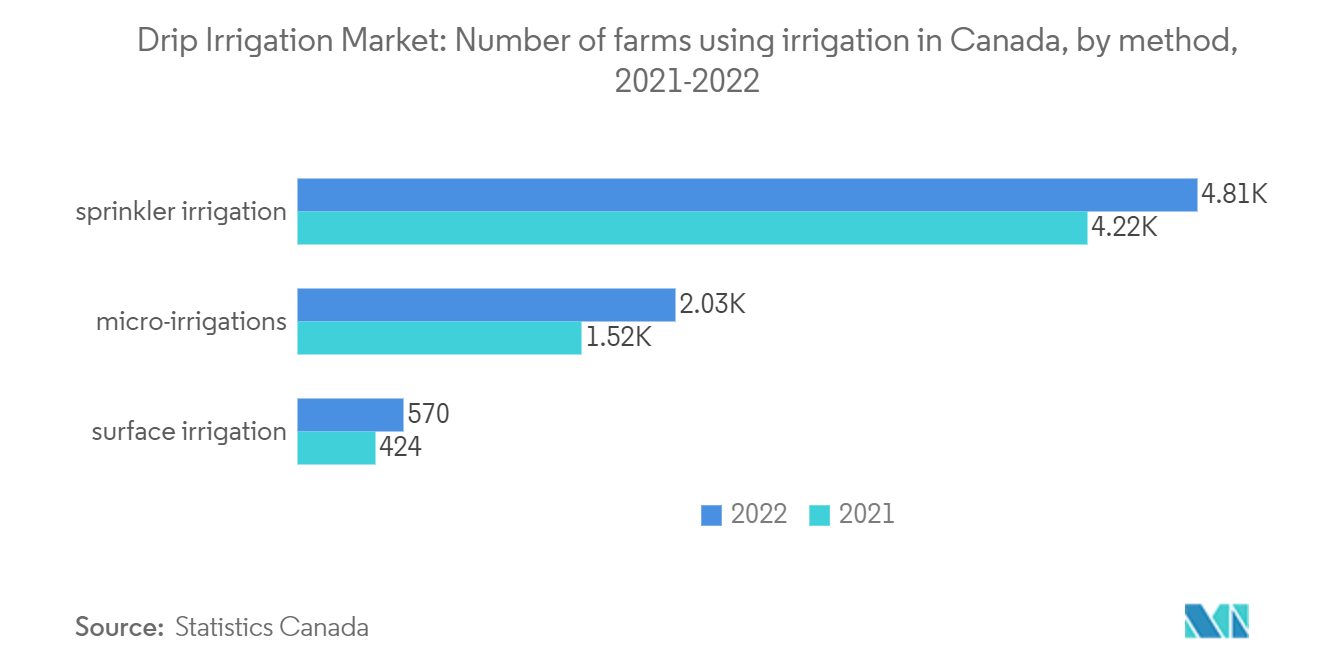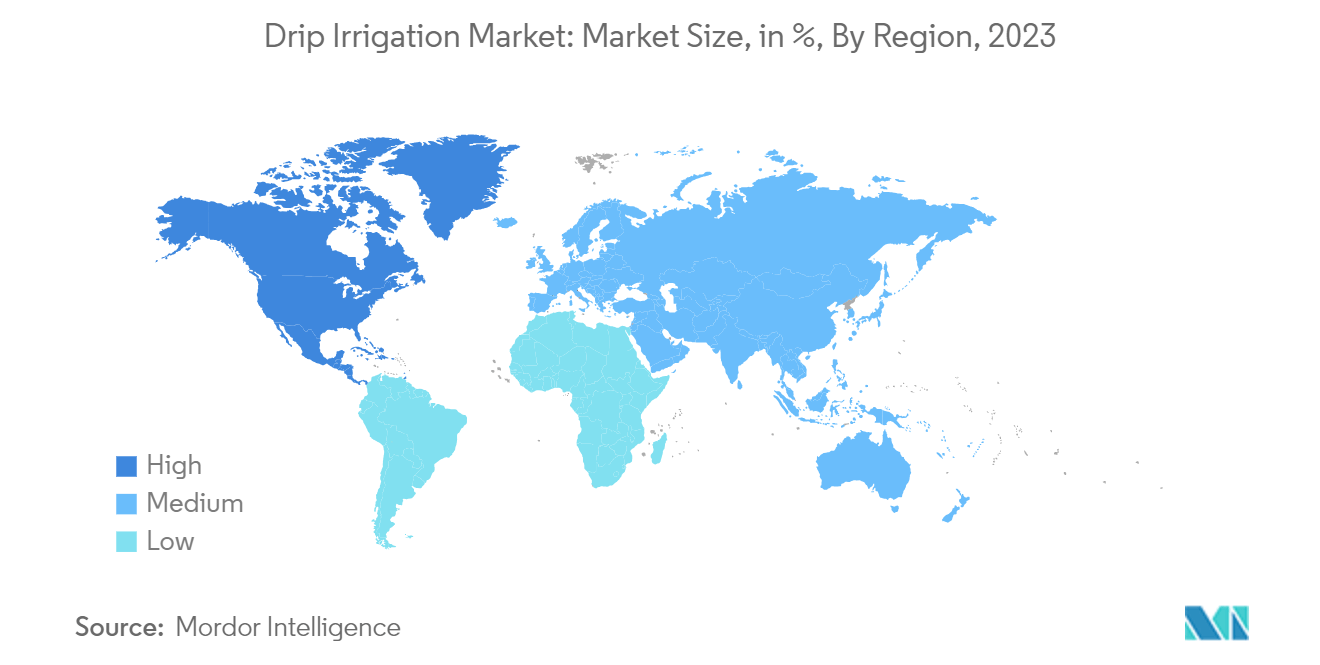Market Trends of Drip Irrigation Industry
Water Scarcity and Rapid Growth in Greenhouse Vegetable Production
Automatic drip irrigation is essential for controlling soil moisture, especially for specialized greenhouse vegetables. Total automation of drip irrigation systems provides a simple, meticulous method for maintaining soil moisture and applying water. Effective time management, elimination of human errors, estimation, and adjustment of available soil moisture levels augment the demand for automatic drip irrigation systems. Furthermore, these systems are expected to increase profits generated per yield.
Water scarcity is a primary issue faced by several greenhouse vegetable farmers. As greenhouse vegetables require ample water, farmers are switching to sprinkler and drip irrigation systems to achieve higher crop productivity. Thus, drip irrigation systems are gaining immense popularity in regions, mainly southeast European countries, primarily to increase the production of greenhouse vegetables. Furthermore, these systems improve crop productivity and minimize the use of fertilizers and water, along with the risk of pathogen attacks. In the United States, Canada, Japan, the Middle East, and Europe, soilless culture is primarily used to produce greenhouse vegetables.

Asia-Pacific Is The Major Market For Drip Irrigation
Growing adoption of micro-irrigation systems, rising technological upgradation in the agriculture industry, and increasing awareness of modern farming technology and irrigation systems are driving the market in the region. In addition, the increasing population, especially in India and China, food security concerns, improvement in crop productivity, and government initiatives toward sustainable farming practices are strengthening the market growth. For instance, in 2023, under the initiative, Netafim provided drip irrigation systems for tomato growers through four Better Life Farming (BLF) Centers present in the Khajuri, Kolaras, and Pohari regions of the Shivpuri district in Madhya Pradesh. The initiative would increase the tomato crop yield by 40%, resulting in higher adoption of drip irrigation systems in Maharashtra. Moreover, China is involved in water-intensive agricultural practices and consumes the highest proportions of its water, with more than 60% usage in cultivated land. To meet the high population demand for food, efficient irrigation practices are being implemented in the country, resulting in increased cereal production from 618.6 million tons in 2021 to 635.1 million tons in 2022.


